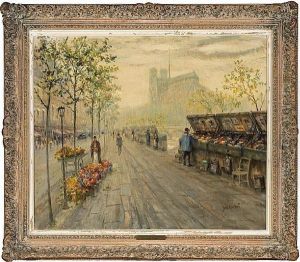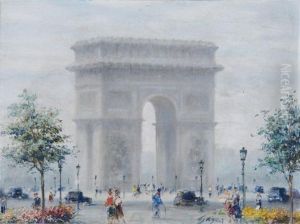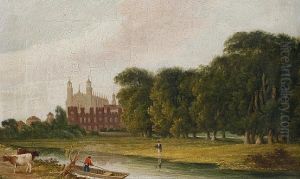Paul Gauci Paintings
Paul Gauci, born in 1784 and deceased in 1855, was a notable figure in the world of printmaking during the 19th century. Although not as widely recognized as some of his contemporaries, Gauci's contributions to the art of lithography and engraving have been appreciated by art historians and collectors alike. His career spanned a period of significant change in the printing industry, marked by the transition from traditional engraving to the innovative technique of lithography, which allowed for more widespread and accessible reproductions of artworks.
Gauci was born into a period of artistic flourish and was part of a generation that saw the rise of Romanticism, which influenced much of his work. His early life and training are not extensively documented, but it is known that he was active in London, a hub for artists and printmakers of the time. In London, Gauci established himself as a skilled lithographer, working closely with publishers and artists to reproduce their works. His dedication to his craft earned him commissions from notable figures and institutions, contributing to his reputation as a skilled and reliable printmaker.
Throughout his career, Gauci's work demonstrated a keen eye for detail and a mastery of the lithographic process, which was still relatively new and evolving during his lifetime. He was adept at capturing the nuances of the original artworks he reproduced, ranging from landscapes and portraits to scenes of everyday life. His prints are characterized by their clarity, depth, and attention to texture, qualities that made them highly sought after by collectors and the public.
Despite his achievements, Paul Gauci's name is often overshadowed by those of his more famous contemporaries. However, his contributions to the field of printmaking, particularly in the advancement and adoption of lithography, remain significant. His works are held in various collections and continue to be studied for their technical excellence and artistic merit. Gauci's legacy is that of a craftsman who played a key role in the development of 19th-century printmaking, bridging the gap between traditional and modern techniques in the art world.


